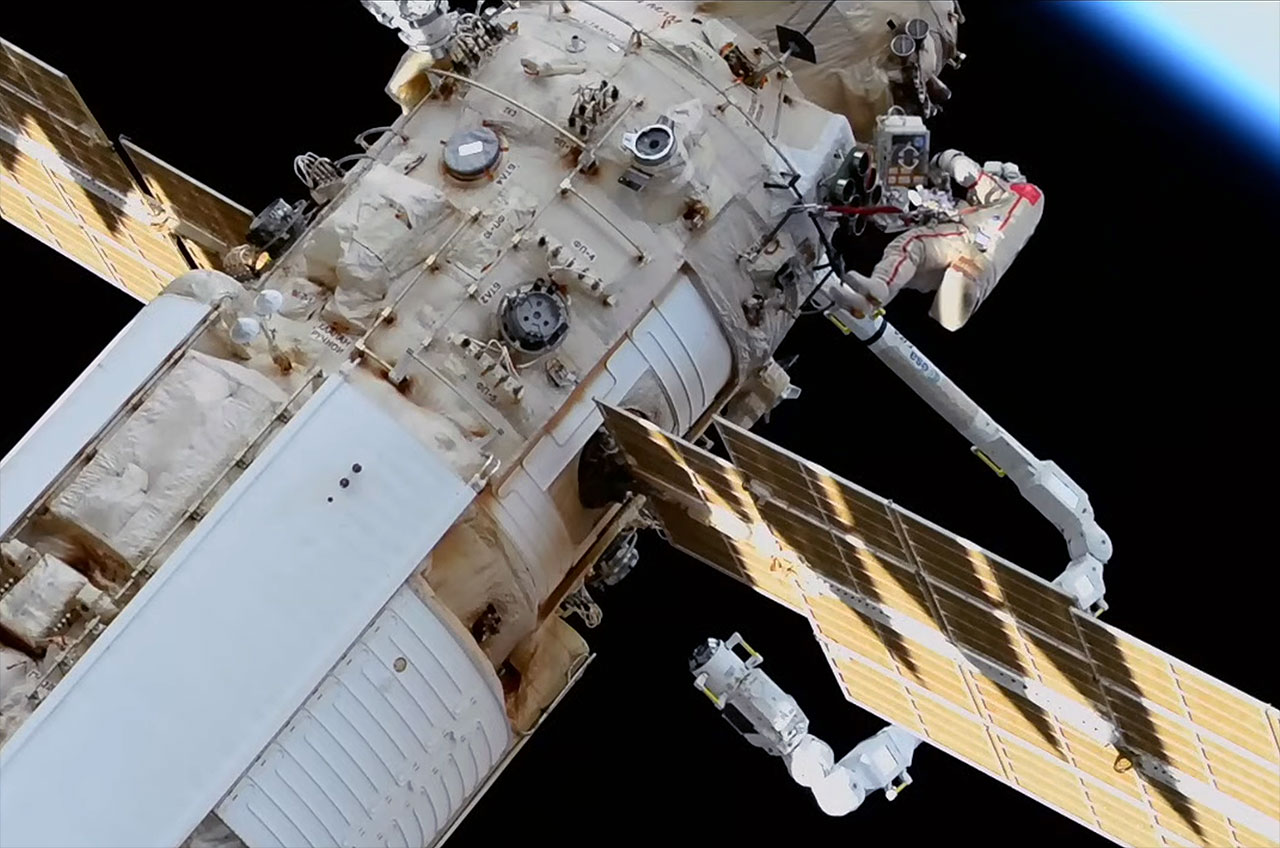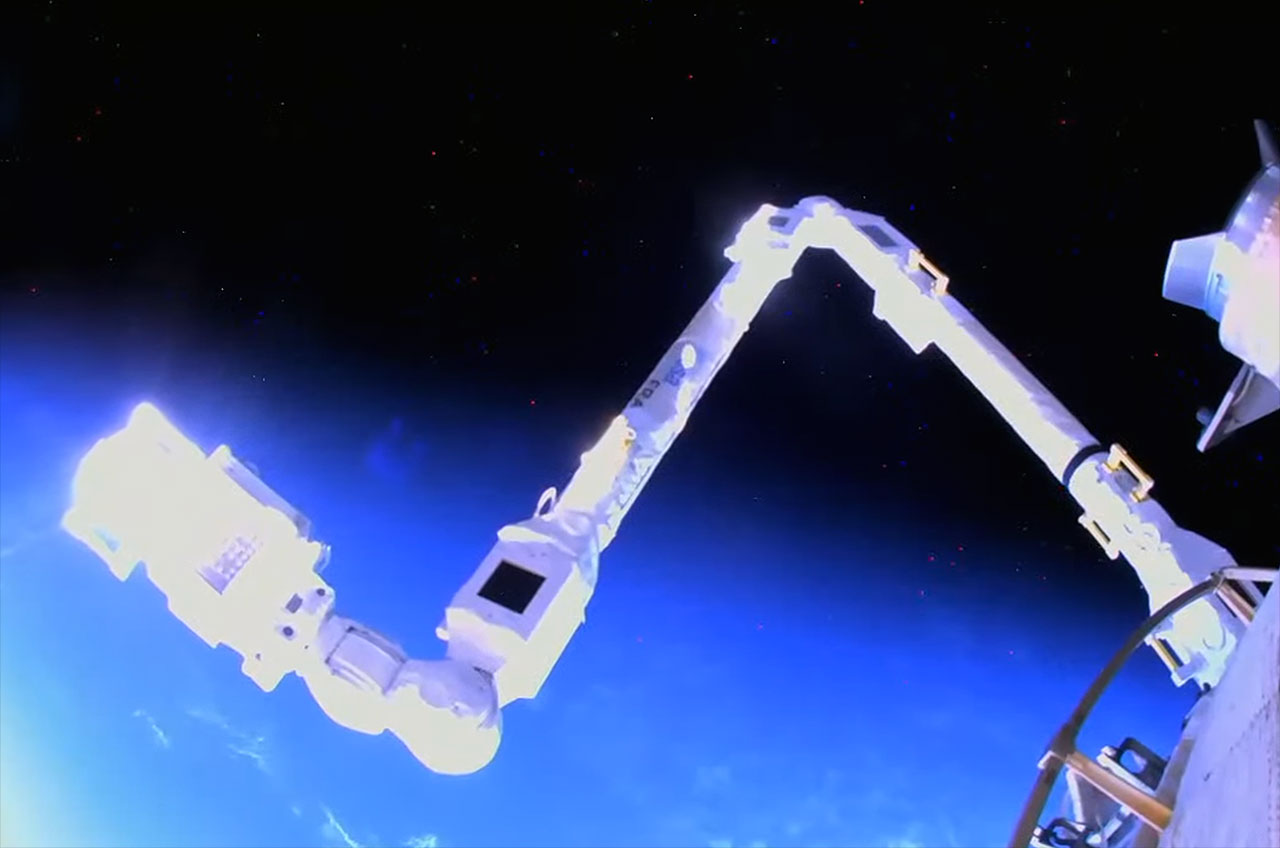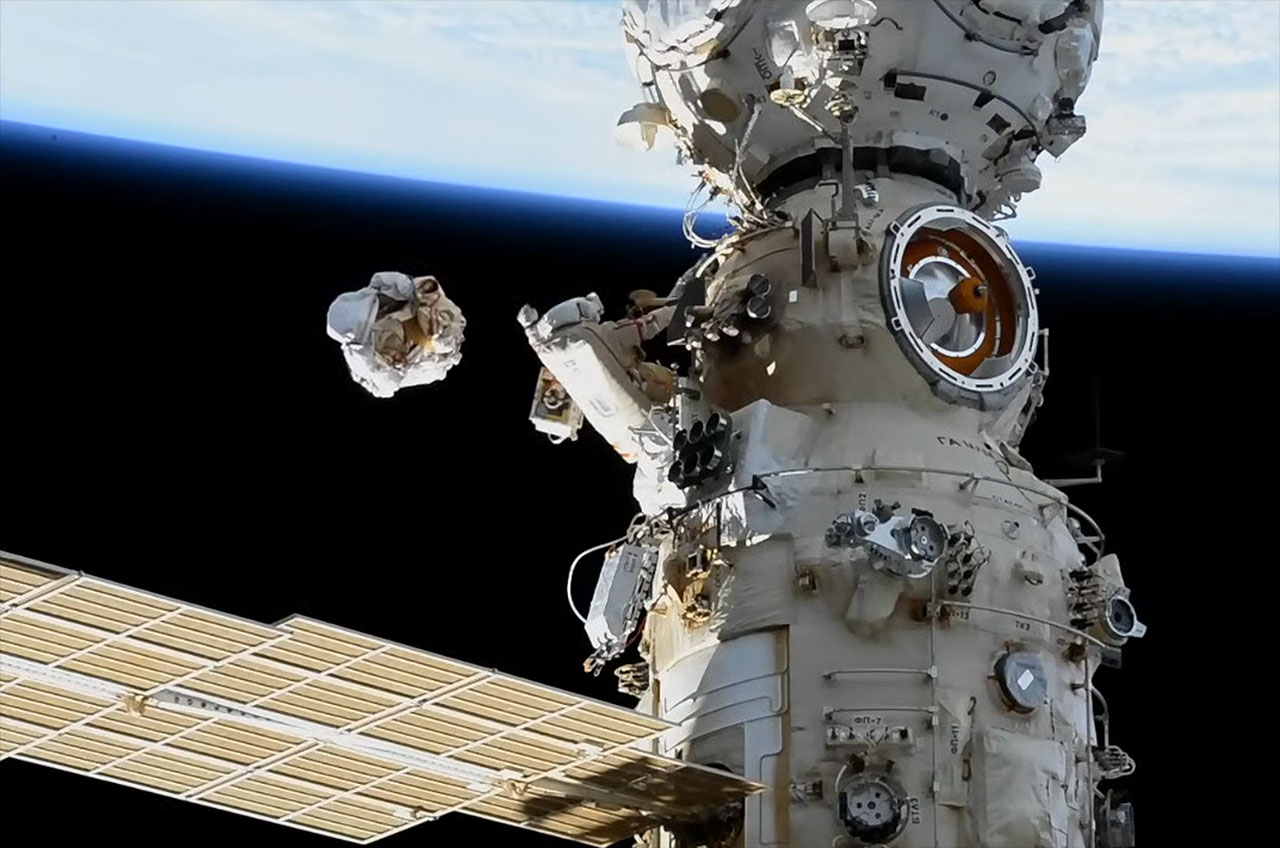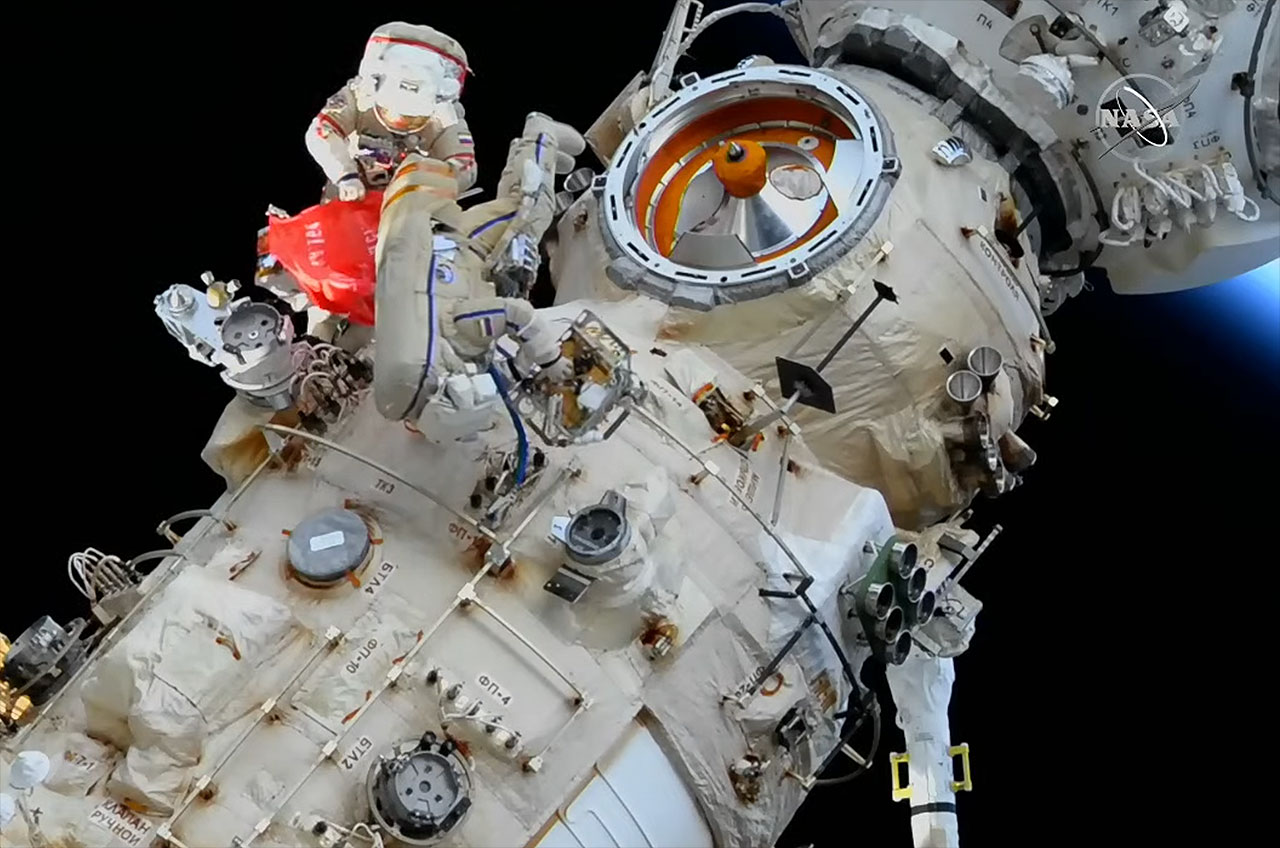European Robotic Arm moves for first time during 250th spacewalk at space station
Two cosmonauts worked outside the orbiting lab for 7 hours and 42 minutes today (April 28).

A new robotic arm for the International Space Station successfully made its first moves as two Russian cosmonauts conducted the 250th spacewalk to service and upgrade the outpost.
Expedition 67 flight engineers Oleg Artemyev and Denis Matveev on Thursday (April 28) continued the work they began on a spacewalk one week ago to outfit and configure the new European Robotic Arm (ERA) for use on the Russian segment of the space station. Their 7-hour, 42-minute spacewalk culminated in the remote manipulator taking its first small steps around the exterior of the orbiting complex.
"It started to move. Yes, it started moving!" exclaimed Artemyev as one of the arm's two end effectors separated from its grapple point three hours and four minutes into the spacewalk. The motion marked the arm's first movement since before it was launched to the station with the Nauka multi-purpose science module in July 2021.
Spacewalks: How they work and major milestones

The ERA, which was provided by the European Space Agency (ESA), is the first arm capable of servicing the exterior of the Russian segment of the station. The complex's other arms, the Canadarm2 and Japanese Experiment Module Remote Manipulator System (JEMRMS), are on the station's U.S. Operating Segment (USOS) and cannot extend out far enough to reach many of the needed areas on the Russian side.
Like the Canadarm2, the ERA moves like an inchworm, positioning hand-over-hand between fixed base points. The 37-foot-long (11.3 meters) robotic arm is able to be driven from both inside and outside the station.
To reach the point of first motion, Artemyev and Matveev first opened the hatch and exited the Poisk mini-research module at 10:58 a.m. EDT (1458 GMT) to begin the spacewalk. After using the Strela boom — the manually operated arm that prior to ERA was the only means of moving cosmonauts and equipment around the Russian segment — to reach their worksite alongside the Nauka module, the spacewalkers got to work on removing insulation that covered the arm's end effectors, or hands.
Breaking space news, the latest updates on rocket launches, skywatching events and more!
Once in hand, Artemyev threw the bundled up insulation overboard for its eventual destructive re-entry into Earth's atmosphere.
"3... 2...1... go towards the horizon!" said Artemyev as the insulation left if his grip. "It is moving quite nicely."

After releasing the launch locks holding down one end of the arm and watching it move based on commands sent by cosmonaut Sergey Korsakov from inside the space station, Artemyev and Matveev continued configuring the ERA. The two released actuators enabling the arm's grip, freed additional launch locks and installed handrails to ease working on and around the device.
The cosmonauts then moved aside to watch as the arm "walked off" its launch moorings to base points on the Nauka module. Following Korsakov's commands, the ERA released one of its grapple fixtures from its launch mount and then reached over to grab a base point on Nauka. Korsakov then repeated this process with the ERA's other "hand."
A third such move to verify that the third of three base points were operational was deferred to a future spacewalk.
As the arm was still in motion, Artemyev moved over to the Prichal node attached to the base of the Nauka module to inspect an antenna used in the docking of Soyuz and Progress visiting vehicles. The antenna had only been able to be partially deployed. Artemeyev discovered that the problem was a snagged cable, which he freed, and Russian flight controllers were able to fully extend the antenna.

Artemyev and Matveev also took a break to photograph a Victory Banner in commemoration of the surrender of Nazi Germany in 1945.
After the arm grappled its second base point, the two cosmonauts re-entered the Poisk module and closed its hatch at 6:40 p.m. EDT (2240 GMT), marking the official end of the spacewalk.
Thursday's extravehicular activity (EVA) was the fifth in Artemyev's career. He now has logged 34 hours and 39 minutes workin the vacuum of space.
This was the second spacewalk for Matveev, who now has spent 14 hours, 19 minutes outside of the International Space Station.
The EVA was the fifth at the space station in 2022 and the 250th supporting the assembly and maintenance of the orbiting laboratory overall. In total, astronauts and cosmonauts have spent 1,583 hours and 44 minutes (or 65 days, 22 hours and 44 minutes) on spacewalks outside of the International Space Station since 1998.
Follow us on Twitter @Spacedotcom or on Facebook.

Robert Pearlman is a space historian, journalist and the founder and editor of collectSPACE.com, a daily news publication and community devoted to space history with a particular focus on how and where space exploration intersects with pop culture. Pearlman is also a contributing writer for Space.com and co-author of "Space Stations: The Art, Science, and Reality of Working in Space” published by Smithsonian Books in 2018.
In 2009, he was inducted into the U.S. Space Camp Hall of Fame in Huntsville, Alabama. In 2021, he was honored by the American Astronautical Society with the Ordway Award for Sustained Excellence in Spaceflight History. In 2023, the National Space Club Florida Committee recognized Pearlman with the Kolcum News and Communications Award for excellence in telling the space story along the Space Coast and throughout the world.
